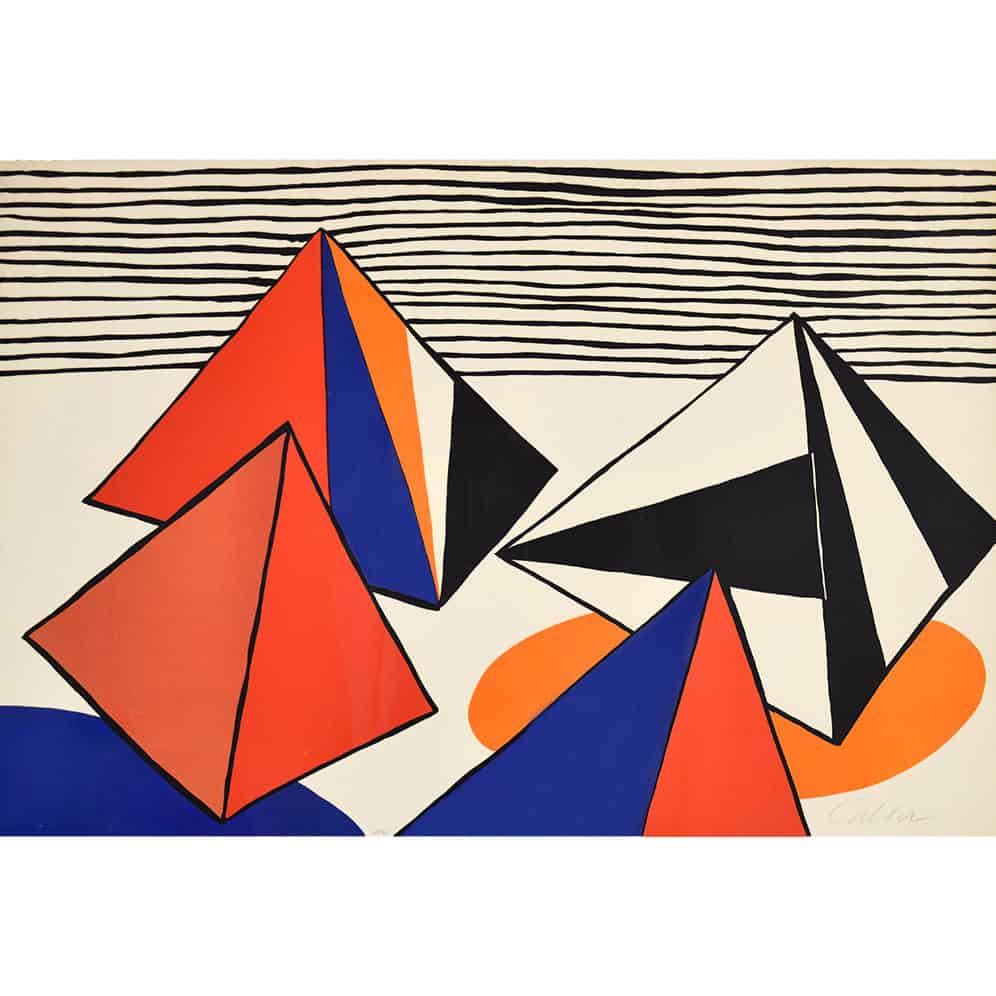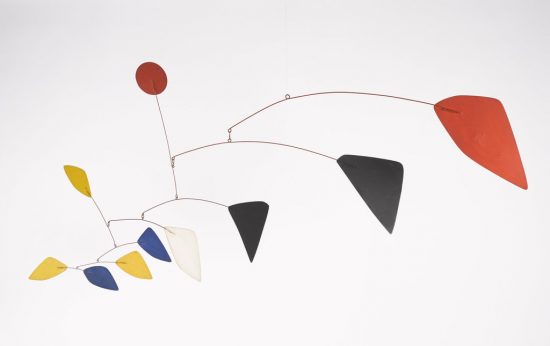Some could say Alexander Calder was born to design. His father, Alexander Stirling Calder, was a well-known sculptor who created many public installations, and Calder’s grandfather, sculptor Alexander Milne Calder is best-known for the colossal statue of William Penn on top of Philadelphia's City Hall tower. Therefore, being surrounded by such creativity from a young age, it was no wonder that Alexander Calder would be most famous for designing a new art medium through three-dimensional creations.
Throughout his childhood, Calder was always constructing toys. He was fascinated with using objects to create multiple dimensions, and upon receiving his degree in mechanical engineering in 1919, Calder decided to apply his passion and formal training to a career as a professional artist. He attended art classes in New York, and in 1926 moved to Paris, where he received acclaim for putting on small-scale circus performances ( http://whitney.org/Collection/AlexanderCalder/8336195 ) known as Cirque Calder. These spontaneous performances were fashioned from wire, string, rubber, cloth, and other objects that Calder found and assembled.
Through the creation of the Cirque Calder, Calder's interest in both wire sculpture and kinetic art began. He maintained a sharp eye with respect to the engineering balance of the sculptures and utilized these to develop the kinetic sculptures. Calder’s further experiments to develop purely abstract sculpture came from his visit to Mondrian’s gallery where Calder was inspired to make art multidimensional. This lead to his first truly kinetic sculptures, manipulated by means of cranks and pulleys. By suspending the works in mid-air, Calder discovered that he could add life to the otherwise static sculpture.
By the end of 1931, Calder moved on to more delicate sculptures, which derived their motion from the air currents in the room. From this, Calder's "mobiles" were born. At the same time, Calder was also experimenting with self-supporting, static, abstract sculptures, dubbed "stabiles" to differentiate them from mobiles.
Calder is noted as saying, “Out of different masses, tight, heavy, middling—indicated by variations of size or color—directional line—vectors which represent speeds, velocities, accelerations, forces, etc. . . .—these directions making between them meaningful angles, and senses, together defining one big conclusion or many.” From this, we can only glimpse at the magical vision he had of the world that surrounded him. The mobiles and stabiles he created to encapsulate that vision continues to inspire us to see the intertwining relationship of all the elements in the universe.


